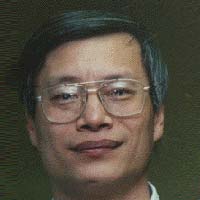Workshop on QUANTUM INFORMATION PROCESSING AND QUANTUM COMMUNICATIONS
Quantum Information Processing and Quantum Communications
Beyond the Heisenberg uncertainty
University of Maryland, Baltimore County,
Baltimore, MD 21250
>VITAE:
Yanhua Shih received his B.S. degree from Northwestern University, China
in 1981 and his Ph.D. in Physics from the University of Maryland in 1987.
He joined the faculty of the Department of Physics and started the Quantum
Optics Laboratory at the University of Maryland in 1989. He is currently
appointed as the full professor of physics and the director of the Quantum
Optics Laboratory. Since 1989, His laboratory has been recognized as one
of the leading groups in the field of quantum optics that attempts to
probe the fundamental problems of
quantum theory. His pioneering research on multi-photon entanglement has
attracted national and international attention. Y.H. Shih received the
2002 Willis E. Lamb Medal, for his pioneering contributions to quantum
electronics and especially the study of spatial coherence effects of multiphoton
entangled states. In recent 10 years, he has published more then 50 papers
in leading refereed journals and given more then 80 invited papers in
national and international professional conferences and workshops.

D(p1+p2) > Max(Dp1, Dp2) and D(x1-x2) > Max(Dx1, Dx2).
The apparent contradiction between these classical inequalities and the EPR inequalities:
D(p1+p2) < min(Dp1, Dp2) and D(x1-x2) < min(Dx1, Dx2) has deeply troubled EPR and many other physicists. Our recent experiments have demonstrated that entangled two-photon systems satisfy the EPR inequalities. These experimental demonstrations also highlighted a number of novel practical protocols for high-precision timing and positioning applications. The accuracy in these measurements could overcome, in principle, the limitations imposed by the uncertainty principle. However, we show that this is not a violation of the uncertainty principle.